How does other flat design simulate design?
For months you may have heard a lot about Flat Design when it was supposed to be the biggest change on the upcoming iOS 7.
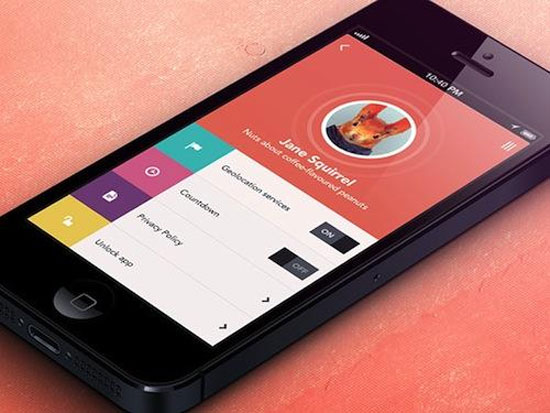
To explain this design philosophy, many people associate it with the Metro UI interface on Windows 8, but most of us still don't understand and why it becomes the current design trend . Flat design emphasizes maximum simplicity and goes against completely the simulation design philosophy (Skeuomorphic) that enhances the beauty and complex graphics. The flat design came into being before Microsoft developed Windows 8 but it is undeniable that Microsoft has contributed to spreading it more widely.
What is a flat design?
Flat Design (Flat Design) is considered a minimalist design philosophy, ie all graphic elements are made simplest with features such as clear color, angular, open space and All are shown in two-dimensional format.
A typical example of the flat interface that you can see most is Metro UI on Microsoft Windows 8 operating system or Windows Phone operating system interface. On the main screen, you will see an interface with completely separate colors, they are not designed in three-dimensional or skeuomorphic form, where simplicity is placed on top.

This design philosophy was born in association with minimalist style (Minimalist) but the simplicity does not mean flat design is boring for users. In a flat design philosophy, beautiful and detailed graphic components are considered unnecessary. If an element is not working, it will cause trouble for the user experience. This is the reason that minimalism is enhanced in flat design. Moreover, the high contrast colors will get better attention and direct the user to the location.
What is simulation design?
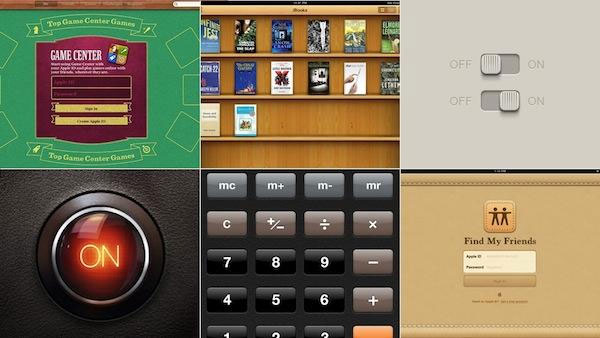
In order to understand the flat design and why it comes to the throne, you should also understand more about the philosophy that it opposes: Simulation design . If you have not heard what this type of simulation design (Skeuomorphic) is, it is the style of manipulating realities into a certain design. To make it easier to understand, the clock icon will look like a real-life clock, the computer icon will take the form of a normal computer . and more.
If Microsoft is known for its flat design, Apple is very fond of simulation design on its recent software products. Not only that, Apple uses a lot and effectively this design philosophy, partly to help their software stand out and look more beautiful. The image above is a good example of skeuomorphic at Apple.
Flat design is the solution to the problems of simulation design
Despite being heavily invested with a beautiful three-dimensional interface, the simulation design is not without problems. This philosophy relies entirely on objects in everyday life so it somewhat limits creativity and efficiency in design. Besides, the design components are not uniform when combined with two-dimensional or less "dimensional" design components.
Sometimes simulation design does not mean anything, for example with Find My Friends application (find friends around), its background is made to resemble creamy yellow leather but it is not a bit realistic at all. In addition, it will become limp when combined with other elements that do not follow the simulation effect.
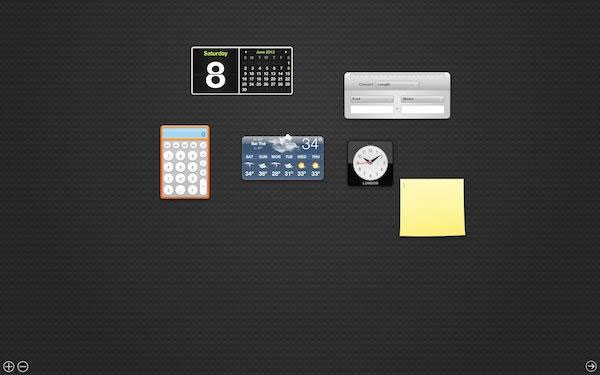
Explain the image: In the picture is the OS X widget window with widgets designed to simulate real objects. The watch is similar to a real watch but it makes it more difficult to watch the time than the electronic display board. Computer widgets are also more difficult to use than calculating directly with Spotlight.
Based on the problems of the simulation design philosophy that flat design was born with two completely different directions. All the limitations and weaknesses of the simulation philosophy are removed on a flat design to provide a simpler and more efficient user experience.
In 1984, when Apple introduced the first graphical user interface (GUI), simulation design began to be used to help users familiarize themselves with strange concepts on computers (think of the directory, desktop, trash .) but later, when the computer was too popular, people didn't need simulations to understand the function of a symbol or a button. Simulation design starts to become redundant. Modernists claim that do not add details without any function in a design today.
The principles of flat design
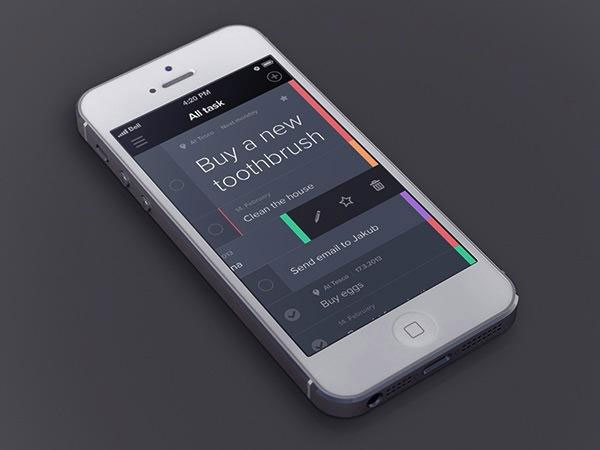
The flat design name derives from its shape, two-dimensional and flat form. The idea of this philosophy is formed without components including shadow effects, bevels, floating lines, granular backgrounds (not smooth) or other tools that give depth to the design. None of the above components is included in the flat design for actual simulation. Flat design has no added effects.

Flat design uses many simple user interface components such as function buttons or program icons (icons). Designers mainly use common shapes including rectangles, circles or squares for flat designs, which helps them stand apart. It is not necessary to cut the right angle but the shapes in this design philosophy can be softly bent. Users can easily touch or click on these interface elements without any trouble, it is made intuitive so that users do not have much knowledge about the design can understand. Simple ingredients are mainly used in flat design.
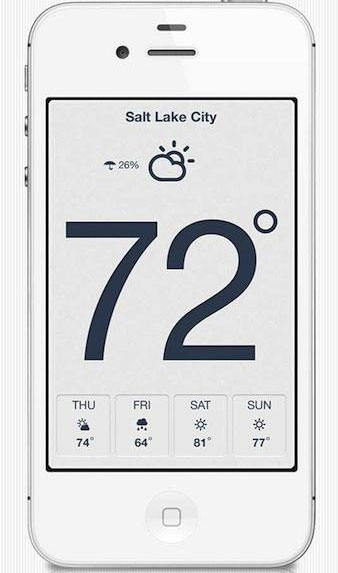
Because of the simplicity of the flat design components, the arrangement of artistic characters (Typography) is also particularly important. The typeface must match the overall interface of the design, in other words simple flat design, the font and font used must be simple to fit into the common space. Therefore, flat design also needs to focus on typography next to the graphic elements.
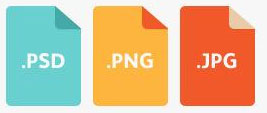
Color is a particularly important factor in flat design. Colors here are often bold and quite diverse in color compared to previous designs. While most palettes (color palettes) use two or three colors, the color palette in flat design uses 6 to 8 colors. In addition, colors are highly saturated and quite brilliant. Colors are also enhanced as typography.
Flat design is a trend
Although the flat design is being applied more and more in design, it is not forever when a new philosophy will replace it in the future. We can not guess which trend will go after the flat design but please be satisfied with the present, with a flat design .
Although Apple has not confirmed but rumors that iOS 7 will follow this philosophy and completely different from the current version of iOS. We can guess that because Apple replaced the former iOS manager manager Scott Forstall by Jony Ive, Apple's most important designer.
You should read it
- 7 signs that your design style is out of date
- Firefox launched a new flat-design logo with 23 Beta version
- Change the flat Facebook interface with Flatbook
- How to activate Material Design interface on YouTube
- 10 principles of UI/UX design for mobile apps
- 9 principles of slide design in PowerPoint
- Principles for designing iOS apps
- Best web interface design software
May be interested
- How to simulate Android on a PC with 3 most popular software
 how to simulate android on a pc with 3 most popular software. currently a lot of people have the need to install android emulators on computers to play mobile games with a big screen and a smoother experience. there are quite a few different emulation software
how to simulate android on a pc with 3 most popular software. currently a lot of people have the need to install android emulators on computers to play mobile games with a big screen and a smoother experience. there are quite a few different emulation software - How to simulate PS3 on PC with RPCS3
 currently, pc emulation software is no stranger to computer users without the devices they want to use such as android phones, iphone ... and ps3 is no exception. so how to emulate ps3 on pc? part
currently, pc emulation software is no stranger to computer users without the devices they want to use such as android phones, iphone ... and ps3 is no exception. so how to emulate ps3 on pc? part - How to use NoxPlayer to simulate Android gaming on computers
 how to use noxplayer to simulate android gaming on computers. to emulate android on pc today we have famous software like bluestack or droid4x. and in this article tipsmake.com will introduce you to another emulator very well
how to use noxplayer to simulate android gaming on computers. to emulate android on pc today we have famous software like bluestack or droid4x. and in this article tipsmake.com will introduce you to another emulator very well - AutoCAD 2021: Professional design software
 autocad is a comprehensive graphic design system used by creators, engineers, architects, and many other professionals. the software allows you to simulate and create animations for complex 2d and 3d designs.
autocad is a comprehensive graphic design system used by creators, engineers, architects, and many other professionals. the software allows you to simulate and create animations for complex 2d and 3d designs. - How does a chatbot simulate a conversation with a human?
 the rise of ai-based language models has given the human-bot-human interface a breath of fresh air. but how do ai chatbots simulate human-like conversations?
the rise of ai-based language models has given the human-bot-human interface a breath of fresh air. but how do ai chatbots simulate human-like conversations? - How to Read Flat Key Signatures
 when you look at a piece of sheet music, the key signature is a symbol of the key that the song is in. key signatures are used so that sharps and flats don't have to be written for every note. rather, the sharps and flats that are the same...
when you look at a piece of sheet music, the key signature is a symbol of the key that the song is in. key signatures are used so that sharps and flats don't have to be written for every note. rather, the sharps and flats that are the same... - How to simulate Java on Android
 java games have been around since long ago when we were using our phones with numbers. but until now it is still popular, sometimes we want to review childhood and do not know which software emulates java well on android phones, today t
java games have been around since long ago when we were using our phones with numbers. but until now it is still popular, sometimes we want to review childhood and do not know which software emulates java well on android phones, today t - How to simulate CASIO FX-580VN X on the computer
 to use casio fx-580vn x computer on your computer, you can use the simulator tool.
to use casio fx-580vn x computer on your computer, you can use the simulator tool. - Ubuntu gives PCs and smartphones a flat interface
 canonical has been trying for years to turn ubuntu into a popular operating system for a variety of devices of different sizes, be it tvs, computers or even smartphones.
canonical has been trying for years to turn ubuntu into a popular operating system for a variety of devices of different sizes, be it tvs, computers or even smartphones. - Bphone 4 has the official name Bphone B86, completely removed physical buttons
 regarding the name of bphone b86, it is still not clear why bkav decided to choose this name. according to popular belief, 86 is a lucky number, bringing 'fortune' to its owner. also, bkav is expecting bphone b86 to bring 'outbreak' for this manufacturer after three generations of bphone not really
regarding the name of bphone b86, it is still not clear why bkav decided to choose this name. according to popular belief, 86 is a lucky number, bringing 'fortune' to its owner. also, bkav is expecting bphone b86 to bring 'outbreak' for this manufacturer after three generations of bphone not really










 What is a Hashtag and how do people use it on the Internet?
What is a Hashtag and how do people use it on the Internet? What is the difference between 4G and 4G networks?
What is the difference between 4G and 4G networks? The power of the Scroll key
The power of the Scroll key Screen capture on computer and phone
Screen capture on computer and phone The best website load testing tools available today
The best website load testing tools available today 7 useful software for office people
7 useful software for office people